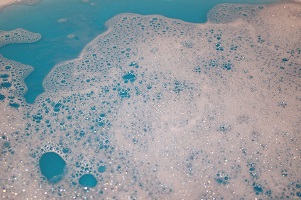Foam can be controlled by making basic changes in the process itself or by using mechanical defoaming equipment. However, chemical defoamers have proven to be the most effective and economical.
Foam is a large number of bubbles generated when certain types of gas are dispersed into the liquid and the dispersion subsequently stabilizes. High strength liquid film surrounds bubbles, forming a large number of unproductive foam. Although the actual cause of foam is a complex research in physical chemistry, its existence has brought serious problems to the operation of industrial processes and the quality of finished products. If not properly controlled, foam will reduce equipment capacity and increase processing time and costs.
Effective chemical defoamers must meet the following requirements:
*It has lower surface tension than the system that added it.
*Easily dispersed within the system.
*Poor or low solubility (incompatibility) in the system.
*Maintain inertia.
*Do not leave a large amount of residue or odor.
*Organic silicone defoamers can most effectively meet these requirements.
